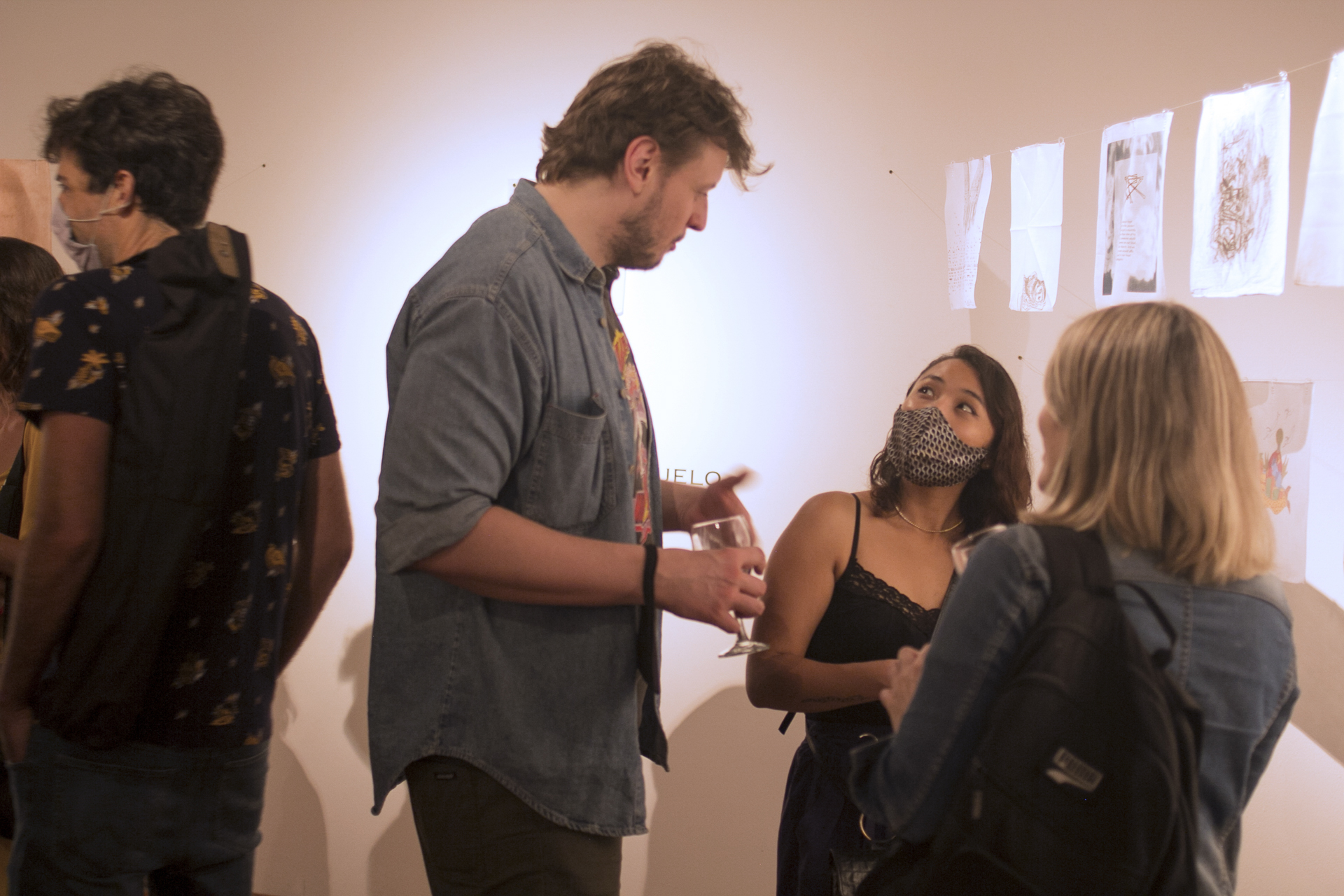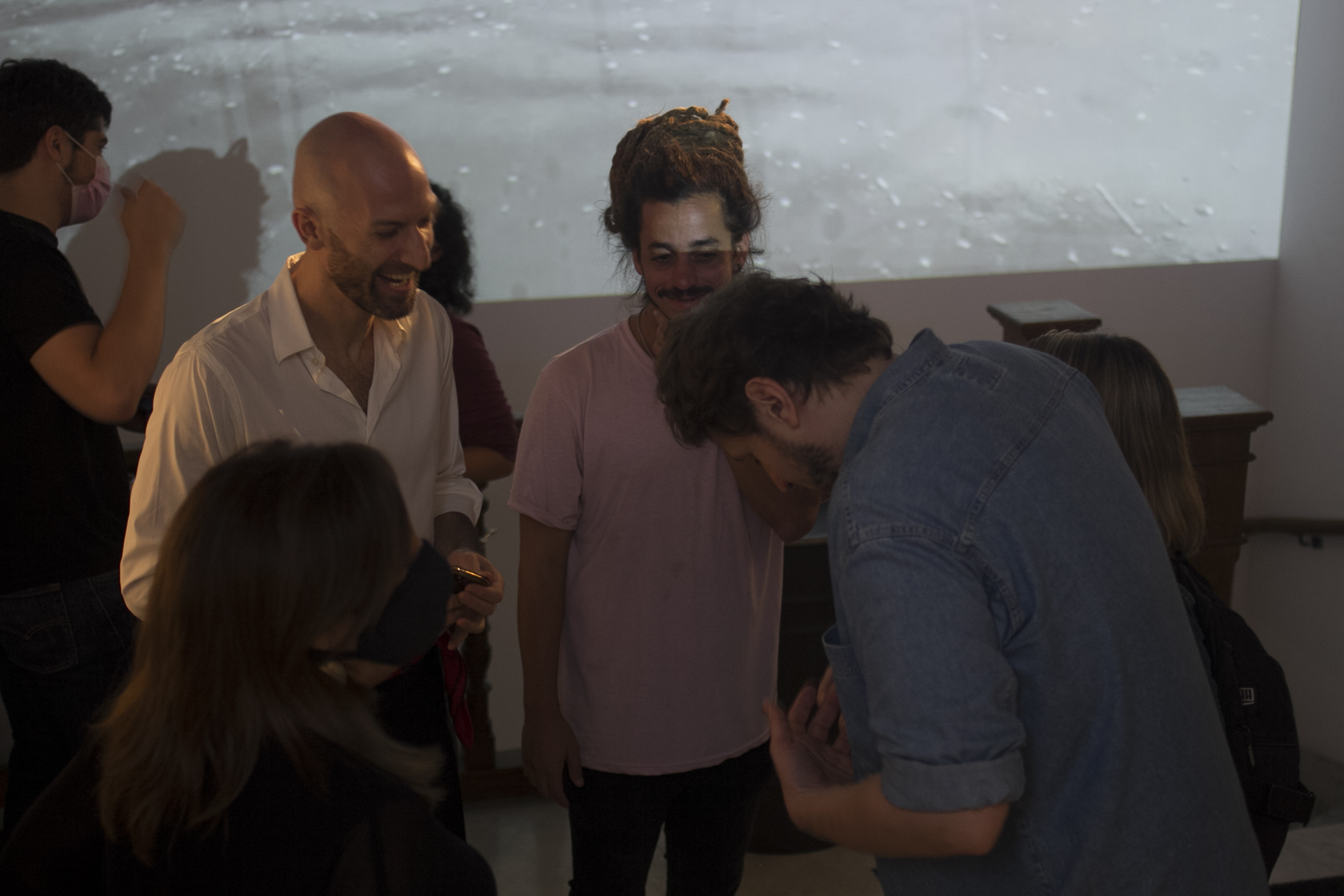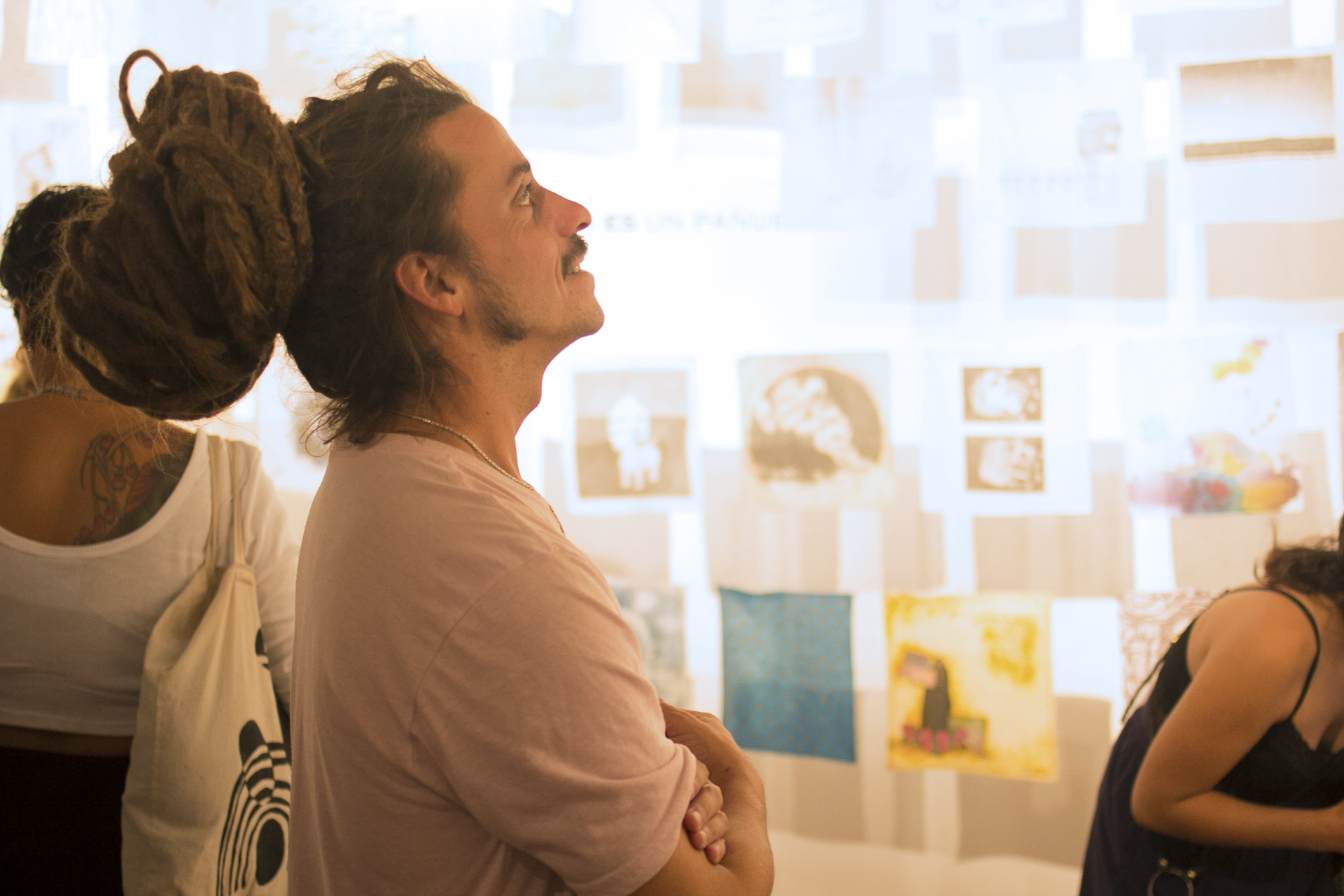Artists
Argentina
Leonardo Mayer
#7: Cohabitar Fronteras
03.02.22 03.03.22
I’m Leo Mayer,¨ nicoleño¨ born in ’82, just a year before the family´s sausages business begins. I don’t think I had a fulfilled childhood and adolescence, my interests were not the same as the rest. I was sent to study drawing at the age of seven to ca´lm my nerves and socialize with others of my age. I went to technical secondary school to study master builder, but I ended up being a chemical technician. My grandparents’ warehouse and my parents’ factory were the patios where I played as a child and spent my best vacations. I lived in Rosario for six years and returned with a food engineering degree to work with my family. I inherited from my paternal grandfather and my maternal grandmother, the virtue of reusing materials. I see art in everything that alters my senses. – LEONARDO MAYER
Graduated in food technology engineering, cultural management and visual arts production. He conducted an art laboratory with Daniel Joglar, Claudio Roncoli and Betariz Vignoli. He made solo exhibitions in the National Museum House of Agreement (2013), Cultural Center of the Library of Congress of the Nation (2015) and in the Municipal Art Gallery of San Nicolás (2017), among other spaces. In 2021 his works were selected for the IV Biennial of Valencia Ciutat Vella Oberta, XVI Hall of Visual Arts of Junín, IV Biennial of Artist’s Book Museum Casa Carnacini San Martín. He was selected by the Curitiba-Brazil International Art Biennial to disseminate his work together with that of twenty other artists.
ARTIST´S STATEMENT
I focus to generate an intimate encounter between the public and the work. I express myself through large-format installations that can be visited or inhabited, and with notebooks-objects that can be manipulated in close contact with the body of work and the body of the public. I materialize my works by reusing and resignifying elements that have a memory of everyday use. I rely on collaborative work in each of my works. I am inspired and motivated by collective social actions and family ties. My works are a mixture in unknown proportions between mathematical, physical and chemical calculations and aesthetic elaboration, which are evidenced in a simple act of engineering.
ABOUT COHABITANDO FRONTERAS
Together apart: Cohabiting borders managed to generate a multidisciplinary teamwork where we were able to put the work of the four members into dialogue, and generate a preliminary research project that we promised to continue working on outside the residence. What stands out in this residence is the excellent level of theoretical research in the program.
BIO
Leonardo Mayer
1982 | San Nicolás de los Arroyos, Pcia. de Buenos Aires, Argentina
Lives and works in San Nicolás de los Arroyos, Argentina.
STUDIES
2021 | Postgraduate in Visual Arts Production, National University of La Plata. Argentina.
2016 | Diploma in Management of Civil Associations and Public Policies. University of General Sarmiento. Argentina.
EXHIBITIONS
2021 | Installation in ALMACÉN- Contemporary Art. Argentina.
2021 | Accumulators, Municipal Art Gallery, San Nicolás. Argentina.
2015 | Empty of glances Museum art and technology space. Argentina.
2014 | Expressive looks. Red zone. Argentina.
2013 | Looking without observing. Cultural Center of the National Congress Library. Argentina.
RESIDENCIES
2022 | Together apart: #COHABITAR FRONTERAS, Proyecto ´ace, Buenos Aires, Argentina.
2021 | CAUCE, Cordillera Gallery, Chile.
Related Activities
Fellowships, Together Apart
#7 | COHABITING BORDERS: results
Artists in dialogue
23.03.22
From cohabiting to collapsing, and vice versa, those were the movements and actions that we proposed from ‘ace for the seventh edition of Together Apart. We chose the title Cohabiting Borders with the intention of exploring the complexities that occur in the exchange of living together, and because we understand the meeting format of this program as an exercise in itself of cohabitation of a frontier: the border between our online and offline existence.
For this collective research, we also defined three axes that helped us review some possible strategies for cohabiting borders, these were: pointing frontiers, deprogramming frontiers, and metabolizing frontiers.
In this way, we were also able to observe different types of borders that contemporary artistic practices explore, from geopolitical, climatic, and technological borders, as well as the borders between forms of knowledge and methods of linking with the world.
The participating artists designed collaborative dynamics based on their areas and disciplines of knowledge but above all, opening themselves to the encounter with the experience of the other(s). In this way, great relevance was given to the exchange and the works generated from the reflection on the possible points of articulation between artists from very varied contexts.
In tune with the online environment of the program, many artists used that condition of “being connected” as an object and means of research, development and presentation of their works. They used streaming platforms such as Twitch and social media visual resources (Instagram filters) or video games. Also, several of Google's tools were used. In some cases these were useful to observe photographic records of artificially generated borders between countries (Google Street View) and in others, the artists resorted to them to point out the limiting or creative interactions that are possible between human knowledge and artificial intelligences. (Google translate). In turn, there were many proposals that involved leaving the online world towards an exploration of the environments where each artist was and the records of it through
photographs, videos and the creation of video-essays.
Moved from the beginning by the desire to understand borders as membranes rather than walls, during the month of work, the artists began collaborative creative searches that have led to visual exercises that will be presented at the ´ace Foundation on Wednesday March 23 and that in many cases, they will be ongoing investigations.
Related artists
FACILITATING TEAM
Daniela Ruiz Moreno (curator), Alicia Candiani (Director at ´ace) and Andrés Knob (Executive Coordinator at ´ace).
Assistant: Florencia Alborcen.















